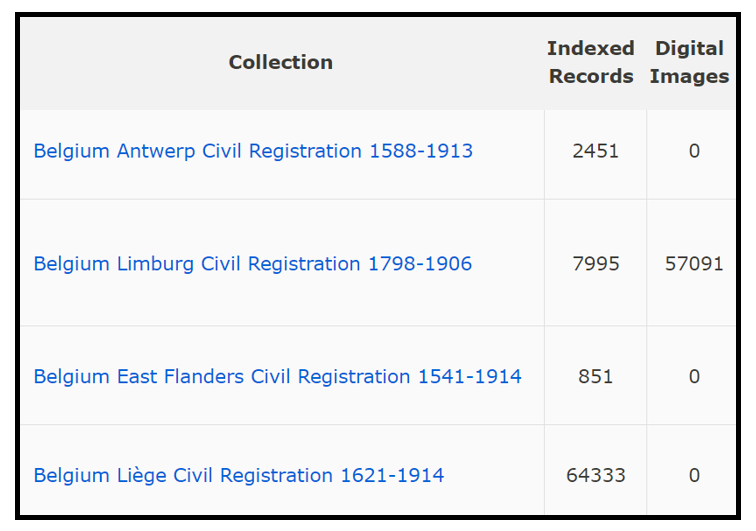by Lisa Cooke | Sep 21, 2016 | 01 What's New, Cloud Backup |
Using your mobile device for genealogy is a great idea, but with that convenience takes some additional know-how. Back-up your mobile device images in a few simple steps and you’ll never say, “I lost my photos on my phone!”
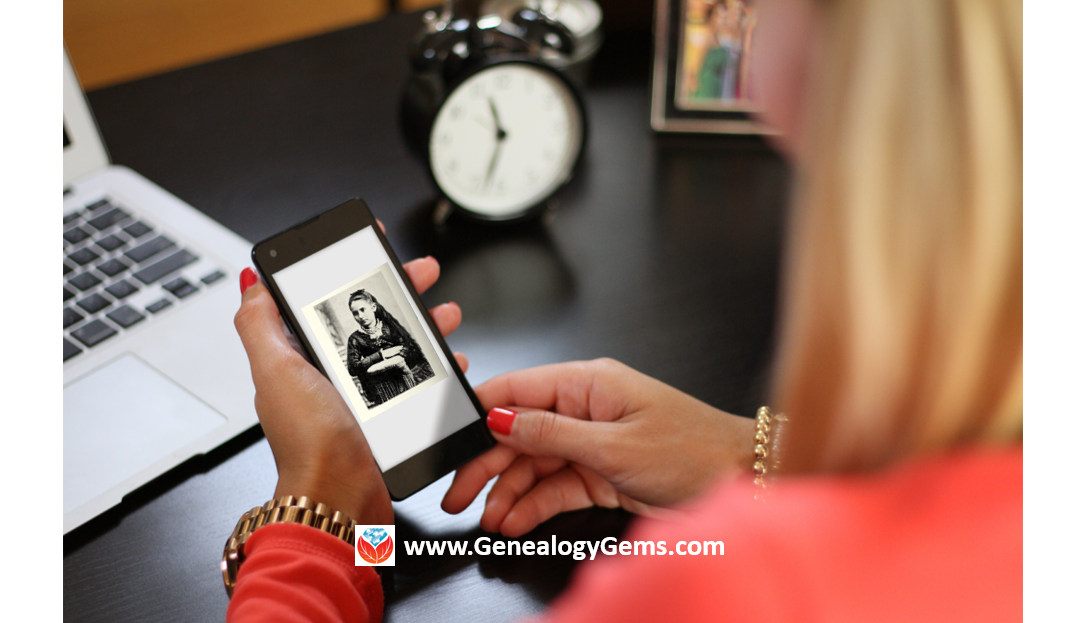
“I lost my photos on my phone!!”
This is NOT what you want to hear from a dear friend who is also a genealogist. So my heart sank when Genealogy Gems Contributor Amie Tennant’s email dropped into my inbox.
Amie wrote:
“I spent 6 hours researching at a cemetery and archives in a far away location. You won’t believe this, but when I got home I realized my smartphone wasn’t working. I had taken all the tombstone images with it, all the document copies were made with it, all my notes were on it. And I hadn’t even had time to back it up.”
That’s the problem, unless you back up as you go, you can’t be sure that just an hour later it won’t all be gone. These days you’re more likely to snap photos of records with your phone than a camera. But with that convenience comes the need for a new game plan to keep those precious images safe.
Back-up Your Mobile Device Images: The Plan
I put together an immediate email to Amie with a restoration and preservation game plan. If, like Amie, you are using your smartphone and mobile devices more and more, you’ll want to put this plan into place too.
First, I advised Amie to visit her phone store (for example, The Apple Store if you have an iPhone) and see if they could retrieve the lost photos and data. You never know unless you ask!

Image of Amie’s 4th great-grandfather she was able to retrieve.
Next, it’s important to consider automatic back-up options. Automatic back-ups are great, which is why I love BackBlaze. But BackBlaze is back up for your computer. The BackBlaze app on your phone only gives you access to those computer files, and doesn’t back up your phone.
One option is to back-up manually as you go. In other words, as soon as you snap that image of a record, save it to a Cloud storage service such as Google Drive or Dropbox. You could even activate Cloud back-up so that it happens automatically, though with the size of image files, you would likely need a paid subscription service to allow for adequate storage space. However, if you are going to continue to use your phone as a genealogy tool, it may be well worth the investment. Let’s look more closely at these two options:
Free Manual Option: If cost is an issue, you can save your photos to a free Dropbox account at the time you take the photo, and then move to more permanent storage on your computer at a later time.
1. Take the photograph
2. Tap the photo in my iPhone’s Photos app
3. Tap Edit and do a quick edit to clean it up (improve contrast, rotate so that it is right side up, crop to get as close-up as possible)
4. Tap Done to close the editor
5. Tap the Share icon and tap Save to Dropbox
6. Select the folder in Dropbox where I want to save the image and tap Save
However, it would definitely be faster and simpler to have your phone automatically backing up to the Cloud.
Low Cost Automatic Option: If your phone is going to be one of your genealogy tools, then automatic cloud back-up may be worth the low cost of around a dollar a month.
Personally, I am not a fan of iCloud even though I have an iPhone. I just don’t find it very user friendly to work with. Setting up your photos and videos to automatically back up to your Google Photos library via Google Drive is another option. Again, since photos and videos do take up a lot of space you’ll likely need to invest in a low cost monthly storage plan. Click here to learn more, or Google search Google Drive Plan Cost (or substitue the name of the service you are considering) for current plans.
Bottom line: There are several Cloud services available for our smartphones and mobile devices, so there’s sure to be one that’s right for you. Where ever your images find their final resting place, make sure it has Cloud back-up.
Amie’s Response to the Plan
I quickly sent the plan to Amie. She responded by saying:
“Thank you, Lisa! It was devastating. You were right, a nice man at the phone store was able to restore them! But, I don’t ever want to have this happen again. When I set up my new phone, a Samsung Android, I noticed a setting that said something like “automatic save to Google drive” and it would sync your images. So I clicked it “on” but now I can’t find where I did that! Any ideas?”
Troubleshooting Backing-up Your Mobile Device
When people shoot me a question, my usual response is “Just Google it!” I Googled Automatic backup of android phone and got several great hits on the results list.
One article on Android Fact.com was particularly helpful. (Read the full article here.) Remember, it can get pretty expensive to be instantly uploading images with your cell phone carrier. I suggest clicking Wi-Fi Only to ensure that uploading only takes place when you are connected to Wi-Fi.
I regularly emphasize backing up important documents that live on your computer. But let’s face it: If you have a smartphone, it would be oh, so sad to have to say “I lost my photos on my phone!” So don’t wait—back up your smartphone or mobile device today.
Another Tip for Using Smartphones for Genealogy
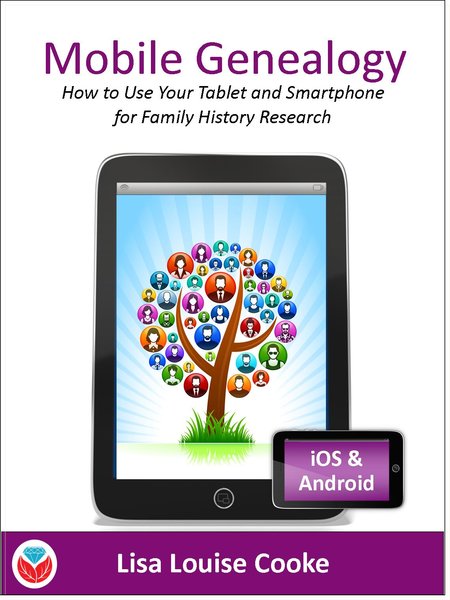 Here’s a another mobile computing tip my book Mobile Genealogy: How to Use Your Tablet and Smartphone for Family History Research.
Here’s a another mobile computing tip my book Mobile Genealogy: How to Use Your Tablet and Smartphone for Family History Research.
Smartphones and other mobile devices offer a plethora of editing tools. It is well worth the investment of a few extra seconds to clean up and maximize images as you go. This is particularly true of records that need to be clear for future reference or printing.
Try applying a filter to your images for maximum readability. I like the Noir filter in my iPhone’s Photos app editor.
More Gems on Using Mobile Devices for Genealogy
How to Use Your Mobile Device for Genealogy: Free Video!
3 Tips for Getting the Most Out of Your Mobile Device
by Lisa Cooke | Apr 29, 2019 | 01 What's New, Writing Family History |
Standing in judgement of our ancestors may be unavoidable. Genealogists dig up the good, the bad, and the ugly. We cannot pick and choose what we find, but we might be able to pick what and how we share it with others.

Recently, I received a letter from a Gem’s reader which included a very delicate and sensitive matter. She writes:
Hi Lisa!
I love your blog and podcast. Thank you for all you do getting gems together for us! I have a question for you and would love to know your opinion (or the opinion of anyone else as well!)
I was recently at a family wedding. I printed out all the family and ancestor’s paper trails and documents and was passing them around to my aunt, uncles, and cousins. My mom’s eldest brother brought up a memory he had of his grandfather, my great-grandfather, a German immigrant. My uncle whispered it to me because the saying my great-grandfather often said is very prejudice. I won’t tell you what the quote is but it’s prejudice against Jewish, Irish, and Dutch people. Here’s my question – should I write down that my great-grandfather was prejudice against certain people to preserve this part of his character or should I let this information fade into history? As genealogists we are always trying to get a full view of the person we are researching – past the census records, military service paperwork, and wills – and into the real person and personality. So, I now have a more broad view of my great-grandfather, but it’s negative. Should I preserve this character flaw in my ancestry notes? I’m conflicted about what to do. Maybe if this was a further distanced relative I would have an easier time brushing aside this prejudice but I’m having a hard time with the “right thing to do.” Any advice would be wonderful!
As a side note I will tell you that in the following generations this mans’ children and grandchildren have married Irish and Jewish spouses. Haha. I guess the “saying” was never echoed by his descendants!
Thanks,
Jennifer
Judgement of Our Ancestors
This is a great question and I applaud you for thoughtfully taking a moment to really think it through and ask for advice before moving forward on recording what you were told.
You asked – Should I write down that my great-grandfather was prejudice against certain people to preserve this part of his character or should I let this information fade into history? My opinion is, no. Mother Lisa says this is gossip and you didn’t hear it straight from your great-grandfather. I certainly wouldn’t want anyone else attributing a negative comment to me without having the chance to review or rebuke it. It’s a slippery slope.

Little Tea & Gossip by Robert Payton Reid, Source: http:⁄⁄www.liveinternet.ru⁄users⁄pmos_nmos⁄post357791815⁄
You also asked – Should I preserve this character flaw in my ancestry notes? And there’s the slippery slope. I believe that we, in modern times, should avoid sitting in judgement of ancestors who are not here to defend themselves. We don’t want to presume that we are in a position to decide how wrong “the crime” is. We certainly don’t want to be negatively prejudiced against others ourselves, but it is impossible to put oneself in another’s shoes in a differing time and circumstance. We know nothing about what the person really said. Perhaps they were joking (even though in extremely bad taste!) Maybe the person who heard this, and passed it on, had an ax to grind and part or none of it is true. Or, maybe there was an experience that our ancestor suffered that could have given him a reason to gripe based on his personal experience. You just don’t know.
In my book, I would chalk this up to gossip and either prove it with substantiated evidence or move on. What goes around comes around so let’s hope it will prevent an occurrence of someone gossiping about you and your future descendant spreading it into the ages.
Deciding to Write the Whole Story
In cases where you have secured substantial evidence that a negative story is true, you still have a choice to make. When I come across particularly sensitive or negative information about an ancestor, and before I make it public, I ask myself, “who will this help, and who will it hurt?” Does adding it to the family history enrich it? Is there anyone living today who might be hurt? If someone stands to be injured, but you’re set on capturing the story, I encourage you to do so privately for your own records and of course, cite all of your sources.
If you do decide to write and publish sensitive stories, I know that you will want to do so in as gentle and fair a way as possible. Here are some things to consider when writing about delicate stories of our ancestors:
- Be sure to cite your source – who told you the story and when. The reader can decide whether to take the story with a grain of salt or believe it.
- Let your readers know your reason for sharing the story in the first place. Genealogy Gems blogger Amie Tennant recently read a family history that included a horrible childhood memory. The writer stated it was important to put the family dynamics in full view so that other stories would be seen in the “right light.”
- If naming everyone in the story will cause hurt or embarrassment, consider documenting the essence of the story without naming names.
Whatever you decide, writing a family history, though difficult at times, can be a rewarding experience.
by Lisa Cooke | Oct 14, 2016 | 01 What's New, Records & databases |
This week, we bring you new and updated record collections from genealogy societies around the world. We are often familiar with the record sets available at FamilySearch, Findmypast, and MyHeritage, but many more wonderful virtual repositories exist online. Check out these records for New Zealand, Belgium, Israel, Britain, and Ireland.

New Zealand – Civil Records
FamilySearch has added a large new collection this week for New Zealand.
New Zealand, Civil Records Indexes, 1800-1896 is an index only, but numbers 857,382 records. This index collection contains birth, marriage, and death records between the years of 1800 to 1896. The original records are located with the New Zealand Government, Internal Affairs.
Birth records may contain:
- First and last name of child
- Date of birth
- Location of birth
- First and last name of father and mother
Marriage records may contain:
- Date and location of wedding
- Bride’s first and last name
- Groom’s first and last name
Death records may contain:
- Date and location of death
- First and last name of deceased
- Date of birth
- Age at death
Belgium – Civil Registrations
Though FamilySearch has only added to these collections, it is a good idea to check back in to see what’s new. This week, four Belgium collections regarding civil registrations have been added to.
You will notice in the chart above, some of these record sets are indexed records only.
Belgium, Antwerp, Civil Registration, 1588-1913;
Belgium, East Flanders, Civil Registration, 1541-1914; and
Belgium, Liège, Civil Registration, 1621-1914 are the index only collections.
Belgium, Limburg, Civil Registration, 1798-1906 is the only one that contains digital images.
Each of these civil registration collections contain birth, marriage, and death records for the town locations and time periods listed. The records for Limburg are written in Dutch or Flemish depending on the timeframe. You will find names, dates of events, and sometimes details such as residence, marital status, and names of parents in any of these civil record sets.
Israel – Misc. Records
Societies around the world bring a wealth of information to our research. A Gem’s reader, Elena, shared with us this next record collection set for Israel. The
Israel Genealogy Research Association has over 730,000 records from over 260 databases on their website. You can search in English or Hebrew and for free, though you are required to register.
The IGRA adds or updates their record collections about every two months. In particular, record collections cover:
They also have miscellaneous records from various parts of the world, such as a list of Russian Jewish POW’s in World War I and a list of Jewish soldiers in the International Brigade that fought in the Spanish Civil War.
Britain – Registers
Findmypast has released the new Britain, Registers of Licences to pass beyond the seas 1573-1677 collection which records the details of early travelers who left Britain for Ireland, continental Europe, New England, Barbados, Bermuda and other overseas colonies.
The collection includes over 27,000 fully searchable transcripts and scanned images of original documents. It includes lists of soldiers who signed a statutory oath of allegiance before serving in the “Low Countries” between 1613 and 1633, licences for individuals traveling to Europe between 1573 and 1677, and registers of individuals traveling to America between 1634 and 1639.
The records showing passengers licensed to sail to the Americas are very rare, making this collection quite significant. They record groups headed for colonies in New England, Maryland, Virginia, Barbados, Bermuda, St Kitt’s, and the Providence Island colony during the 1630s. Very few original records from this early period of American history are available online. Registers record the details of some of earliest English settlers to arrive on the continent.
After 1609, all travelers over the age of 18 had to swear an oath of allegiance to the monarch before the Clerk of the Passes could issue them with a licence to leave the country. The dates shown in these records are the date the oath was taken or the date the licence was issued – not the date of actual departure.
Ireland – Indexes
Societies around the world continue to amaze us, as does The Irish Genealogical Research Society with three recent updates. These updated collections include new birth, marriage, and death confirmations of citizen of Ireland.
In particular, the birth index was most recently updated to reflect information gathered from several thousand records taken from Index of Nuns, a CD publication in 2015 by the Catholic Family History Society. which notes biographical information for about 14,000 nuns, many of them from Ireland.
Also, there are entries from a census-substitute dated 1887 recording the Roman Catholic residents of the parish of Kirkinriola, Co. Antrim and entries taken from Emigrants from Ireland, 1847-1852.
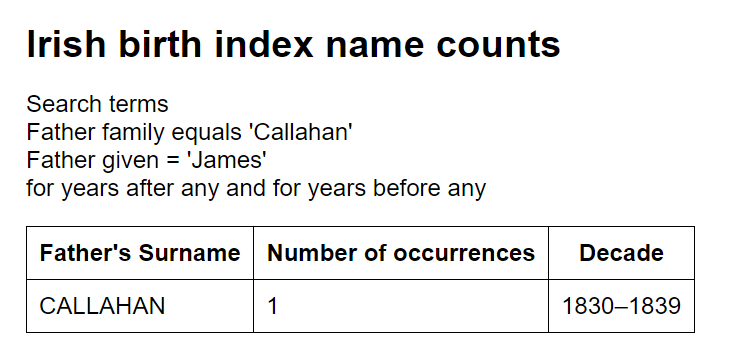
IGRS is another genealogy society around the world containing Irish records.
The full database is available only to Members. However, a restricted but free surname-only search of the database can be made by non-members. A search will tell you how many entries in the database match your search criteria. It will not provide all the details of those matched records. You can however become a member with all access by visiting their subscription page here.
Genealogy Societies Around the World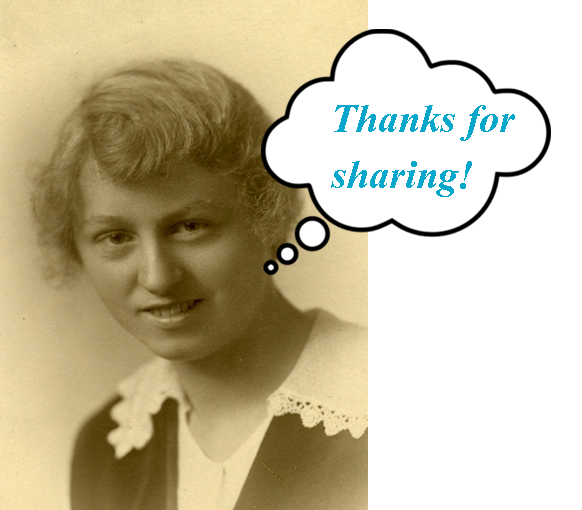
You may never have considered joining a genealogical society outside of your country, but may find it is just what you need to break through that brick wall. Do you know of a genealogy society that has an extensive collection of records? If you do, would you share it with us? We would love to hear about it in the comments below. Be sure to leave a link so that we can check it out!
by Lisa Cooke | Mar 23, 2015 | 01 What's New, Census, Memory Lane, United States

Edna Selby, about age 4. Taken about 1873.
Baby names are trendy things. Sure, there are a few standbys in every culture–like William and John in English–but popular baby names come and go. In fact, sometimes you can guess about how old someone is today based on their name (think Josh, Mildred or Shirley).
Popular Baby Names by Decade can help you decide whether your great-grandma Beulah or great-uncle Earl’s names were unusual for their time or a whim of the generation (Earl ranked 21st in 1890 and Beulah ranked 78th).
The site has lists of the most common names in the U.S. census back to the 1880s. You’ll also find a master list of THE most popular baby names during the last 100 years. No surprise: in the U.S., James, John, Robert, Michael and William top the boys’ to buy medication online charts. But I was a little surprised at the most popular women’s names. Click here to see what they are.
Was your ancestor an ethnic minority whose name may have only been popular in their neighborhood or where lots of other Irish, African-Americans or others lived? You can also search for the most popular names within a particular state.
Take a look and think about how your own family falls in. My parents weren’t following the crowd when they named me Sunny, that’s for sure. But my grandmother was a trendy gal: all 7 of her living children’s names hit the top 15 in the 1940s! And in Genealogy Gems Podcast episode 78 Lisa has talked about not only the popularity of her first name, but the soap opera star that made Lisa #1 in the early 1960s!


 Here’s a another mobile computing tip my book Mobile Genealogy: How to Use Your Tablet and Smartphone for Family History Research.
Here’s a another mobile computing tip my book Mobile Genealogy: How to Use Your Tablet and Smartphone for Family History Research.



